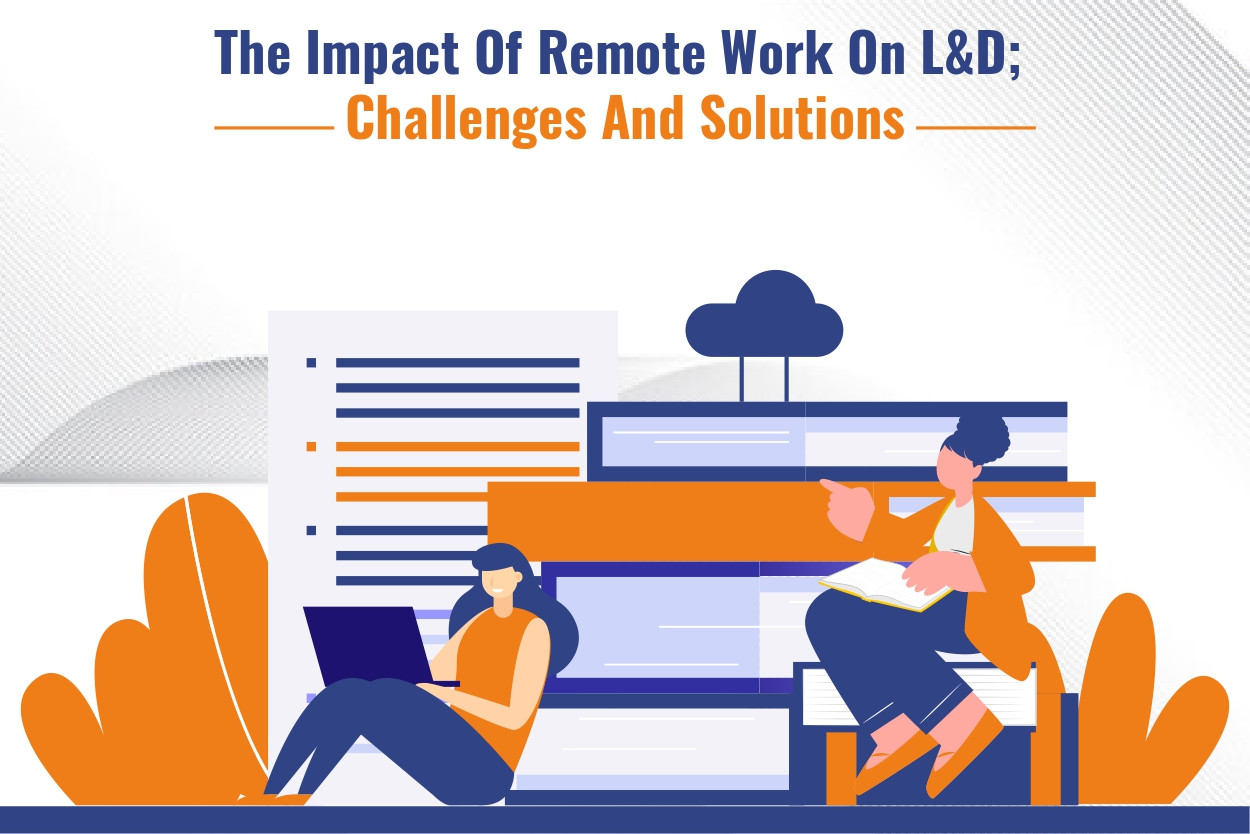
The Impact of Remote Work on L&D; Challenges and Solutions
The COVID-19 pandemic has drastically changed the way we work, with remote work becoming the norm for many organizations. While remote work offers many benefits, it also poses significant challenges to employee learning and development (L&D) programs. With remote employees working in different time zones and locations, it can be challenging to provide effective training and support. This has led to the need for innovative solutions to overcome the challenges of remote work and ensure that L&D programs remain effective. In this article, we will explore the impact of remote work on L&D, the challenges it poses, and potential solutions to overcome these challenges.
How Remote Work Has Impacted L&D; The Popular Challenges
Remote work has had a significant impact on employee learning and development (L&D) programs. One of the most significant challenges is the lack of in-person interaction between trainers and employees. This can make it challenging to provide personalized feedback and support, which is essential for effective learning. Remote work also means that employees are often working from different time zones and locations, making it difficult to schedule training sessions that suit everyone.
Secondly, remote work is the need to adapt Leadership Training Programs to remote formats. Traditional in-person training methods may not be effective when delivered remotely. Training programs must be redesigned to ensure that they are engaging, interactive, and accessible to remote employees. In addition, remote work requires employees to be more self-directed and self-motivated, making it essential to provide training that supports these skills.
Thirdly, remote work requires the use of technology for communication and collaboration, which can present technical challenges for employees. Poor internet connectivity, hardware or software issues, and a lack of IT support can impact the effectiveness of L&D programs.
Fourthly, remote work can lead to a sense of isolation and disconnection from colleagues and the organization. This lack of social interaction can make it challenging to build relationships and networks that are crucial for learning and development.
Fifthly, remote employees may have different learning styles and preferences that need to be accommodated in L&D programs. Some employees may prefer visual or interactive learning, while others may prefer more traditional methods. Organizations must provide a variety of Leadership Training formats to accommodate different learning styles
Finally, remote work can impact the overall culture of the organization, making it challenging to maintain a cohesive learning and development strategy. Remote employees may feel disconnected from the organization, making it more challenging to engage them in L&D programs.
Overall, remote work has posed significant challenges to L&D programs, requiring organizations to adapt and innovate to ensure that training remains effective and engaging for remote employees.
Solutions To These Challenges
Here are some potential solutions to the challenges of remote work in employee learning and development programs:
Lack Of In-Person Interaction; How To Fix:
Encourage trainers to schedule regular one-on-one check-ins with employees to provide personalized feedback and support. Utilize video conferencing tools to conduct virtual face-to-face meetings and facilitate virtual group discussions. Consider assigning remote buddies or mentors who can provide additional support to remote employees.
Adapting Training Programs To Remote Formats:
Redesign Training Programs to be engaging, interactive, and accessible to remote employees. Utilize technology such as gamification, virtual simulations, and interactive e-learning modules. Encourage remote employees to participate in online discussion forums and peer-to-peer learning opportunities. Consider asynchronous learning opportunities that allow employees to learn at their own pace.
Resolving Technical challenges:
Provide IT support for employees and ensure they have the necessary technology and resources to participate in L&D programs. Consider providing remote employees with a stipend to purchase necessary hardware or software. Conduct regular IT check-ins to ensure employees have the necessary tools and support.
Overcoming The Feeling Of Isolation And Disconnection:
Encourage remote employees to participate in virtual team-building activities, social events, and online communities. Create opportunities for employees to connect and build relationships virtually, such as virtual coffee breaks or virtual water cooler chats. Consider offering coaching or counseling services to remote employees to address any mental health or well-being concerns.
Accommodating Different Learning Styles:
Provide a variety of Leadership Training formats, including visual, audio, and interactive learning opportunities. Consider conducting training in shorter, more focused sessions to accommodate remote employees' schedules. Encourage employees to provide feedback on training programs and incorporate that feedback into future training sessions.
Maintaining A Cohesive Learning And Development Strategy:
Communicate regularly with remote employees about L&D programs and the organization's overall learning and development strategy. Consider conducting virtual town hall meetings or webinars to keep remote employees informed and engaged. Encourage remote employees to provide input on L&D programs and incorporate that feedback into future initiatives.
Final Words
Thus to conclude, remote work has brought significant changes to employee learning and development programs, presenting various challenges that need to be addressed. However, with proper planning and implementation of solutions, remote employees can continue to develop their skills and contribute to the organization's success. By providing personalized support, adapting training programs, offering technical support, building social connections, accommodating different learning styles, maintaining a cohesive L&D strategy and other several factors organizations can ensure that remote work does not hinder employee learning and development.
